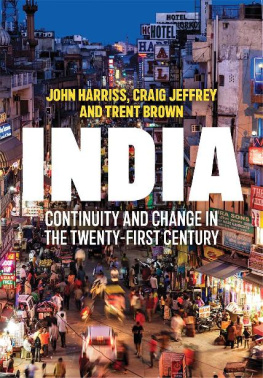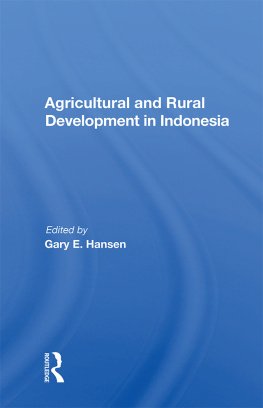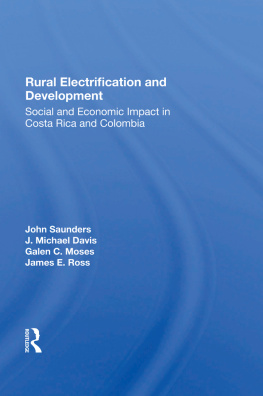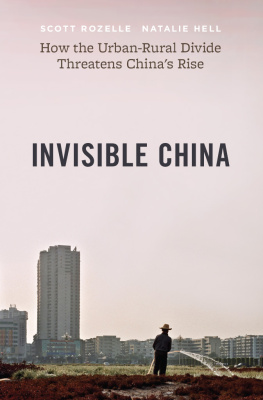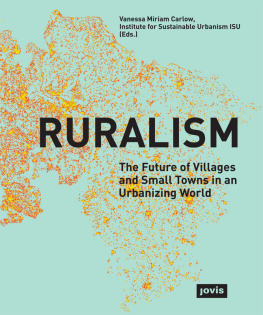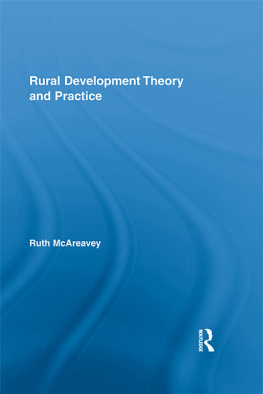ROUTLEDGE LIBRARY EDITIONS:
URBAN STUDIES
Volume 11
DEVELOPMENT AND THE
RURAL-URBAN DIVIDE
DEVELOPMENT AND THE
RURAL-URBAN DIVIDE
Edited by
JOHN HARRISS AND MICK MOORE
First published in 1984 by Frank Cass & Co. Ltd.
This edition first published in 2018
by Routledge
2 Park Square, Milton Park, Abingdon, Oxon OX14 4RN
and by Routledge
711 Third Avenue, New York, NY 10017
Routledge is an imprint of the Taylor & Francis Group, an informa business
1984 Frank Cass & Co. Ltd.
All rights reserved. No part of this book may be reprinted or reproduced or utilised in any form or by any electronic, mechanical, or other means, now known or hereafter invented, including photocopying and recording, or in any information storage or retrieval system, without permission in writing from the publishers.
Trademark notice: Product or corporate names may be trademarks or registered trademarks, and are used only for identification and explanation without intent to infringe.
British Library Cataloguing in Publication Data
A catalogue record for this book is available from the British Library
ISBN: 978-1-138-89482-2 (Set)
ISBN: 978-1-315-09987-3 (Set) (ebk)
ISBN: 978-1-138-89682-6 (Volume 11) (hbk)
ISBN: 978-1-315-17895-0 (Volume 11) (ebk)
Publisher's Note
The publisher has gone to great lengths to ensure the quality of this reprint but points out that some imperfections in the original copies may be apparent.
Disclaimer
The publisher has made every effort to trace copyright holders and would welcome correspondence from those they have been unable to trace.
DEVELOPMENT
AND THE
RURAL-URBAN DIVIDE
Edited by
John Harriss and Mick Moore
FRANK CASS
CONTENTS
First published in Great Britain by
FRANK CASS AND COMPANY LIMITED
Gainsborough House, 11 Gainsborough Road,
London E11 1RS
and in the United States of America by
FRANK CASS AND COMPANY LIMITED
c/o Biblio Distribution Centre
81 Adams Drive, P.O. Box 327, Totowa, N.J. 07511
Copyright 1984 Frank Cass & Co. Ltd.
British Library Cataloguing in Publication Data
Development and the rural-urban divide.
1. Economic development2. Equality
3. Geography, Economic
I. Harriss, JohnII. Moore, Mick
330.9HD82
ISBN 0-7146-3241-4
This group of studies first appeared in a Special Issue on Development and the Rural-Urban Divide of Journal of Development Studies, Vol. 20, No. 3, published by Frank Cass & Co. Ltd.
All rights reserved. No part of this publication may be reproduced, stored in a retrieval system, or transmitted in any form, or by any means, electronic, mechanical, photocopying, recording, or otherwise, without the prior permission of Frank Cass and Company Limited.
Printed and bound in Great Britain by
T.J. Press (Padstow) Ltd, Padstow, Cornwall
There is a rural-urban dimension to most analyses of economic growth and societal change, especially in poorer countries with large agricultural sectors. The subject of rural-urban relations is potentially vast. This collection makes no attempt to deal with the theme as a whole, but is rather focused on a debate which has emerged in development studies over the last two decades. This debate is centred around the work of four scholars, notably Michael Lipton [1977], but including also M. J. Mamalakis [1969 and 1971], Ashok Mitra [1977] and Robert Bates [1981] (for details see the first paper in this collection). There are two themes central and common to their work. First, in attempting to explain national level patterns of economic resource allocation within a political economy framework, they use the concept of economic sectors, mainly the rural/agricultural versus urban/industrial categorisation, to supplement and partly substitute for the more conventional class categorisation. Second, they suggest in varying degrees that the way in which sectoral conflicts influence the allocation of economic resources through state action has been the prime cause of slow rates of economic growth (and, in Lipton's work, of growth biased against the poor) in developing countries since the Second World War. Most evidently in Lipton's work, inter-sectoral relations are elevated to a position where they compete with the grand theoretical frameworks of modernisation, dependency and modes of production.
Such claims have inevitably been contested. Most debate has centred around the claims by Mamalakis (on Latin America), Lipton (on developing countries generally) and Bates (on tropical Africa) that the Third World development policy has been characterised by some form of urban bias. (Mitra makes a more limited counter-claim about the emergence of rural bias in post-Independence India.) Many of the critiques, including all those in this collection, are focused mainly on the validity of the analytic models put forward to account for urban bias. However, there is generally not even a consensus in development studies that there is a set of phenomena characteristic of developing countries which can best be explained by adopting sectoral categories and models. There are at least two major reasons for dissenting from this dissent: for believing that there is something to explain, and that notions of urban bias are a useful point at which to begin seeking explanation. The first is now well-documented: the prevalence in developing countries of economic policies which bias prices in various markets against agriculture.
The contrast with industrial countries, which generally protect and subsidise agriculture, is almost complete [e.g. Bale and Lutz, 1981]. And incidentally, as Lipton states in his paper here, some of the developing countries which he had earlier listed as being exceptions to the general rule of urban bias are not in fact exceptions at all. The second reason, which Lipton also reiterates in his paper here, is that differences between average rural and average urban incomes are far greater in contemporary developing countries than in the now-industrialised countries at a comparable level of development.
Sceptics might suggest that the last observation can be explained without resort to inter-sectoral analysis. Perhaps it is because contemporary developing countries have access to and use technology and capital equipment from the industrialised nations which is very productive compared to poor country agricultural technology, thus generating high urban and industrial incomes and high urban-rural income differentials. The explanation of high urban to rural income ratios lies in technology and international economic relations, not in inter-sectoral relations and their effect on government policy within developing countries. There remains a strong case for examining theories of inter-sectoral relations seriously and on their own terms.
The examinations of these theories presented here are generally critical in tone. The five case studies by Ellis, Harriss and Harriss, Moore, Nolan and White, and Redclift take Lipton's model of urban bias as a point of departure. All in some way tend to agree that it has some plausibility especially at first sight, but that it is also inadequate and incomplete in various respects. The focus is on the validity of the model in explaining how governments influence the allocation of material resources. Most criticisms relate to two issues introduced by Moore in the first paper.





